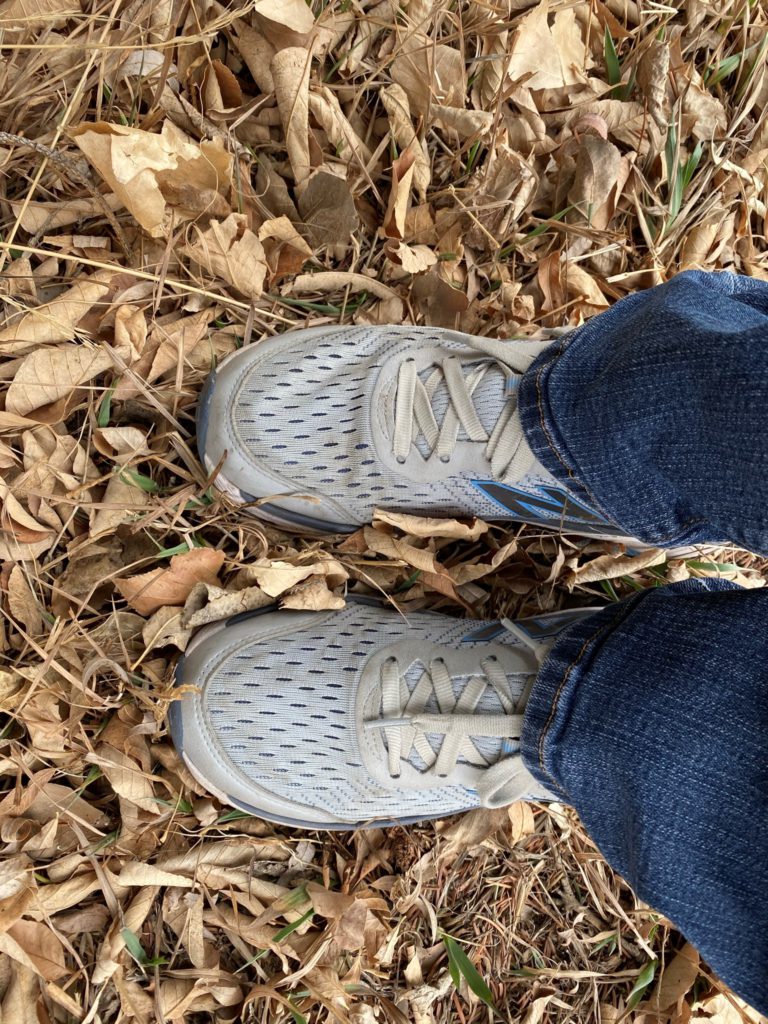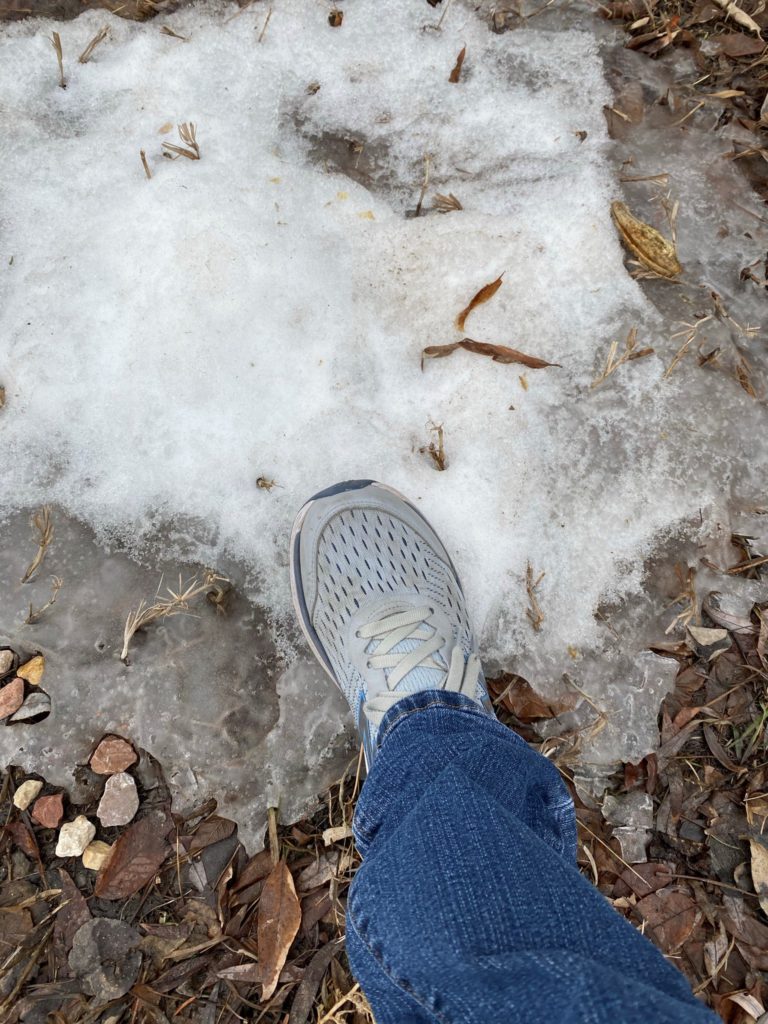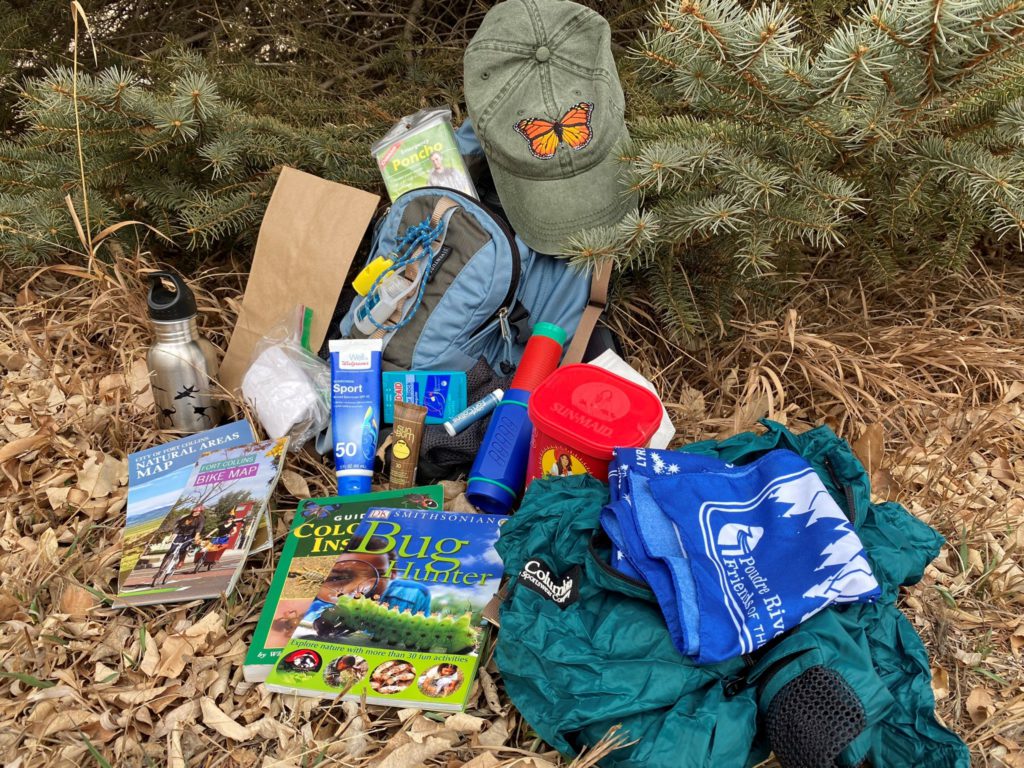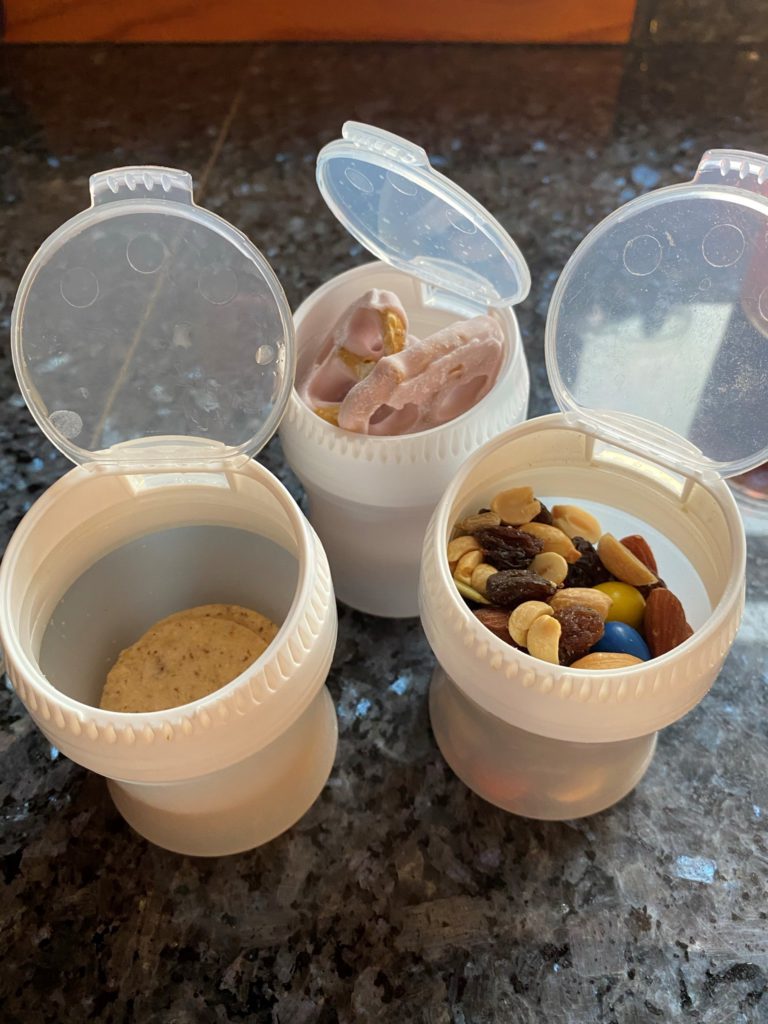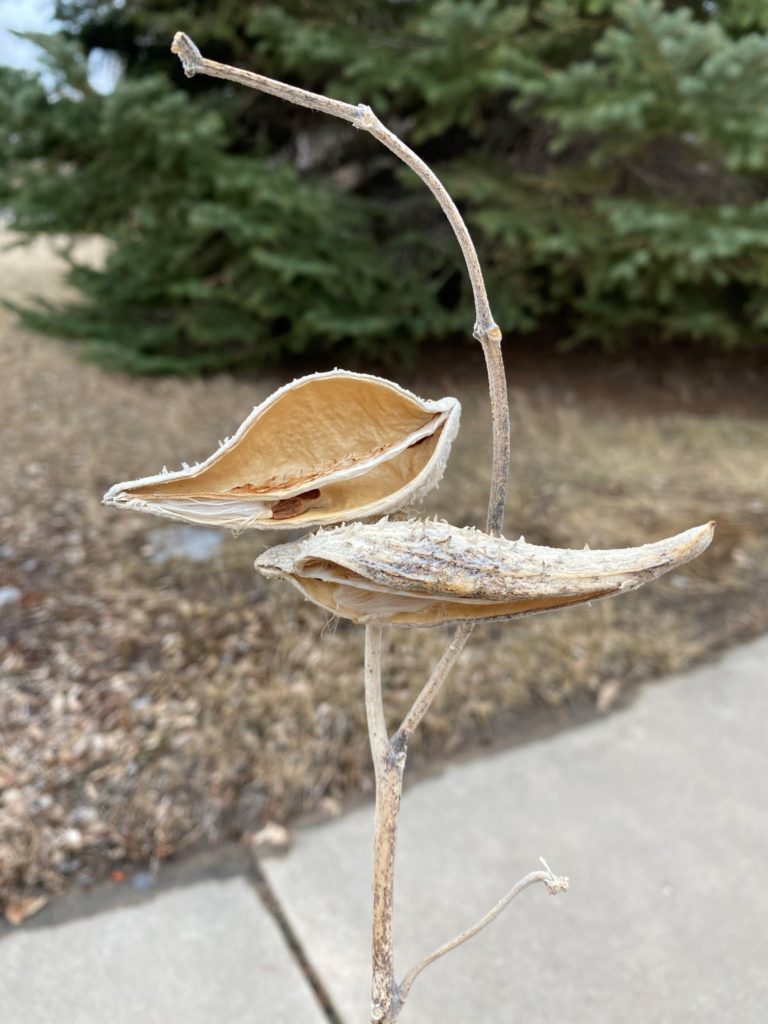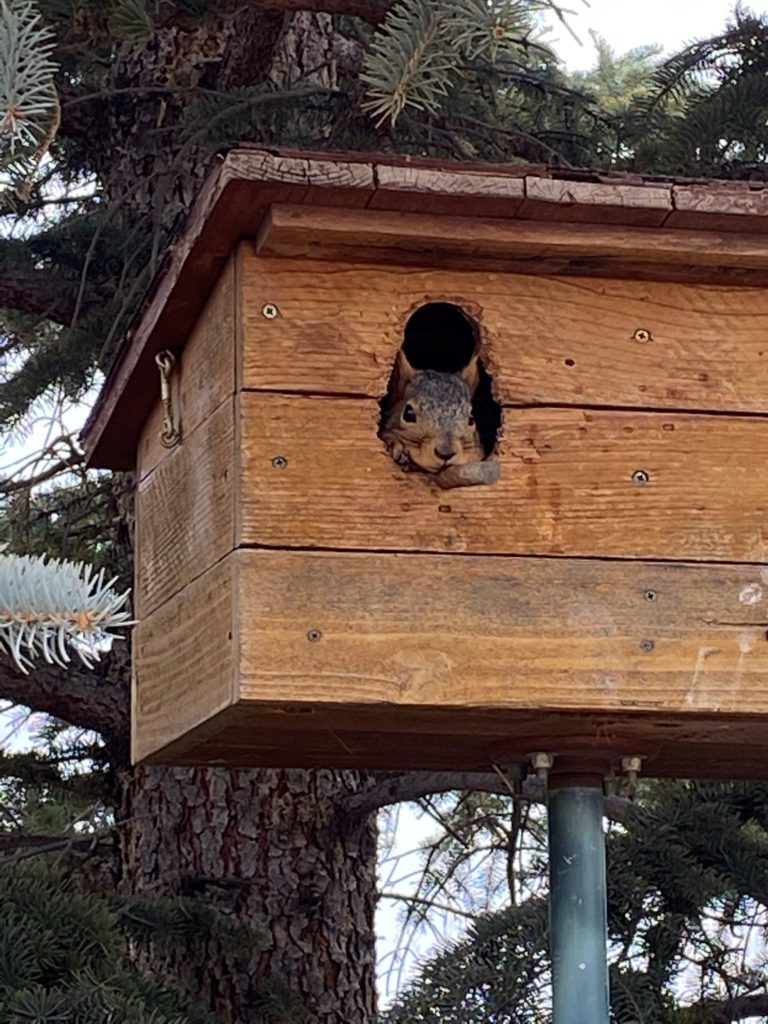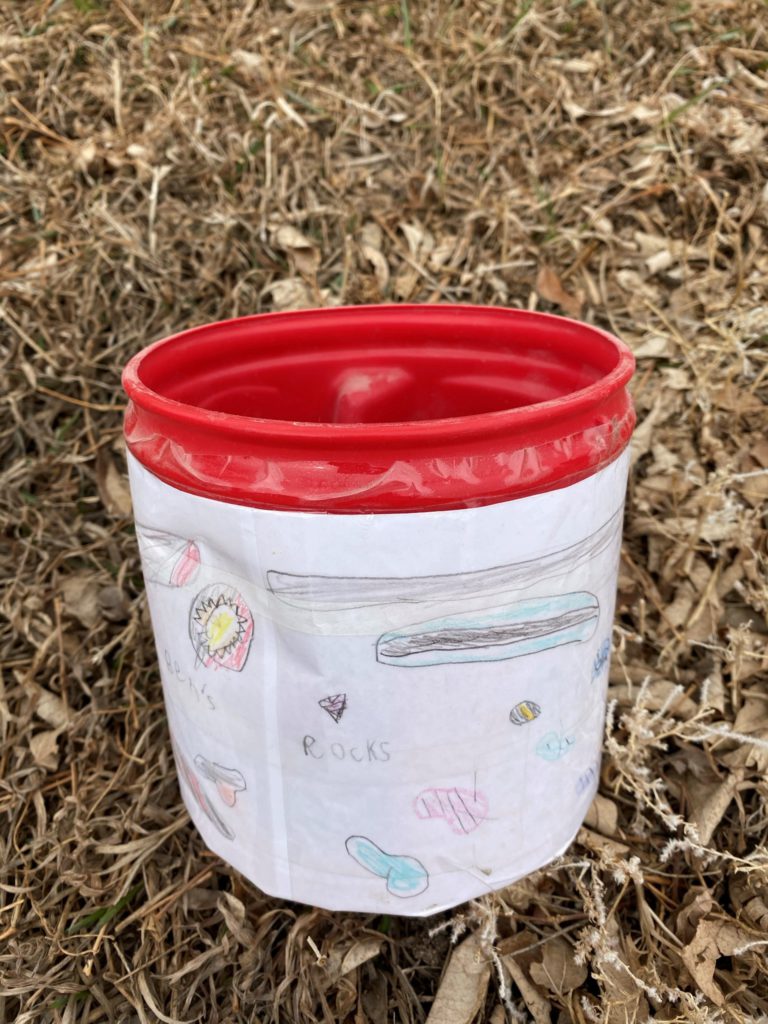“We should not think of a child’s experience in nature as an extracurricular activity,” says Richard Louv, author of Last Child in the Woods: Saving our Children from Nature-deficit Disorder. “It should be thought of as vital to children’s health and development.”
Supplies needed:
- Yourself
- A grownup
- Walking shoes
- Backpack or small pack – fill with items in the list
Here’s what you do:
Pack your pack with water and sunscreen and a hat for sure then open the door and move yourself outside. Take a deep breath, look up, look down, look side to side, smile at your walking pal and put one foot in front of the other.
The lists and pictures here offer some suggestions for what to put in your pack.
On a walk
Put your good shoes on and head out but make sure you have sunscreen a hat and water.
I like to step on the snow so use old shoes
On a longer hike
“I Spy” what to bring – what do you see in this picture of things for your backpack?
- Backpack
- Water bottle
- Kleenex (or toilet paper just in case)
- Sunscreen
- Favorite hat
- Chapstick
- Books to help identify rocks, plants, birds
- Local bike and trail maps
- Bandana
- Binoculars (there is a monocular in this picture)
- Snacks (hint: raisins)
- Wind jacket
- Poncho
- Band-Aids
- Bag to carry your trash back out with you
- Snacks (I use recycled gum containers to carry my snacks)
Play I Spy
I see an empty seed pod– what is it? (hint – Milkweed pod which Monarch butterflies love!)
I see a home – who lives in it?
I see a super cool magical rock.
I see fossils in these rocks! Wow!
I see pieces of wood that look like __.
I can make my own collection container:
Challenge Extensions:
For the little ones (Grades 1-3)
- Walk around a tree 3 times
- Using the alphabet as your guide, name things in nature starting with letters (grown up help!)
- Tell your grown up how you feel when you’re walking.
For the older kids (Grades 4th to middle school)
Take a sketch pad, stop in a safe location and draw what you see.
Make up a story based on what you’re seeing, for example, “The tree next to the fence is a home for squirrels and birds but a long time ago it _”. Use your imagination.
“The Why” behind the Challenge:
From Scholastic:
Why Kids Need Nature – “We should not think of a child’s experience in nature as an extracurricular activity,” says Richard Louv. “It should be thought of as vital to children’s health and development.” The editors of Scholastic’s Parent & Child talked with Louv about his book “”
From Children and Nature Network:
“Over the past few generations, childhood has moved indoors. On average, today’s kids spend up to 44 hours per week in front of a screen, and less than 10 minutes a day playing outdoors. And for too many kids, access to nature is determined by race, income and zip code.
We support a global movement of leaders working to turn the trend of an indoor childhood back out to the benefits of nature — and to make sure that all children have equitable access to outdoor spaces where they can learn, play and grow.”
Check out these books for more fun!
Books about outside adventure and activities can be found in a bunch of places on the library shelves such as these:
552 – Rocks
580 – Plants
613.69 – Outdoor safety and survival
623.8882 – How to tie knots
796.5 – Outdoor recreation




Outdoor Science Lab for Kids: 52 Family-Friendly Experiments for the Yard, Garden, Playground, and Park by Liz Lee Heinecke
Be a Survivor by Chris Oxlade; illustrated by Eva Sassin
Fifteen Minutes Outside: 365 Ways to Get Out of the House and Connect with Your Kids by Rebecca P. Cohen
Natural History Collector: Hunt, Discover, Learn! Expert Tips on How to Care for and Display Your Collections and Turn Your Room Into a Cabinet of Curiosities by Michael Sanchez
Check out these great websites for kids about getting outside locally!
City of Fort Collins – Adventure Kit
Larimer County Natural Resources family activity resources
Northern Colorado BEET (Building Environmental Education Together) – local partners and activity calendars


